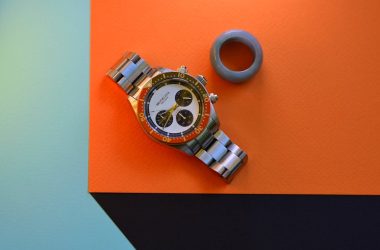Watching manta rays glide near the surface can pull at the heart and spark a wish to get up close. For people new to snorkeling, those encounters often seem out of reach yet within grasp when proper steps are taken.
Patience, basic skills, and a respect for wildlife create a solid foundation for a safe and memorable meeting with these gentle giants. The following sections offer practical details that help newcomers evaluate readiness and plan for manta experiences.
Where You Can See Manta Rays
Manta rays gather in a handful of well known spots around the planet where currents bring plankton to the surface, and sightings are frequent enough for guided outings to operate reliably. Locations such as the central Pacific, parts of the Indian Ocean, and select sites in the eastern Pacific host regular manta season windows, creating predictable opportunities for snorkel trips.
For visitors in Hawaii, a manta ray night snorkel kona is a popular choice, giving swimmers a chance to witness these gentle giants gliding under the stars in a safe, guided setting.
Small islands and shallow reefs often produce the clearest viewing because the animals come close to surface cleaning stations and feeding zones. Boat operators in these areas run short runs to prime sites, which reduces time on the water and helps novices stay fresh and alert.
Are Manta Encounters Safe For Newbies
Manta rays are filter feeders that pose little threat since their behavior focuses on feeding and social interaction rather than confrontation, so the direct risk to a calm swimmer is very low. Trainers and guides who work at popular manta sites focus strongly on safe spacing, limiting group size, and setting rules for approach, which together reduce stress on both ray and snorkeler.
People who lack experience often need a few minutes to steady breathing and coordinate with a buddy, after which the spectacle can feel natural rather than overwhelming. Observing from a respectful distance and following guide instructions keeps the encounter gentle, quiet, and unforgettable.
Gear That Helps Beginners
A snug mask that seals well is the single most important piece of gear because a steady view lowers the chance of panic when an animal approaches close enough to fill the frame. A comfortable snorkel and soft fins help conserve energy and keep movement fluid, which matters when mantas circle slowly and you want to match that rhythm rather than thrash around.
Many operators offer flotation shirts or small vests that keep a novice buoyant without stiffening the body, and that upright support reduces unnecessary leg work. If a wetsuit is used for warmth, a thin one offers thermal comfort and preserves a broad range of motion so swimmers can remain relaxed and alert.
How To Prepare Mentally And Physically
A few short sessions in calm, shallow water build confidence far more quickly than a single long outing that tires the swimmer and frays the nerves, so plan progressive practice instead of a one shot trial. Breathing exercises that emphasize slow inhalation and longer exhalation steady heart rate and make the mask feel less claustrophobic when a shadow glides overhead.
Gentle stretching and a short warm up on land loosen hips and ankles to improve finning technique, which keeps swimmers horizontal and avoids breaking the water at awkward angles. Mentally, treating the first encounter as a quiet observation task rather than a performance takes pressure off and lets curiosity lead the way.
What To Do In The Water

Remain horizontal with arms held close to the torso to present a small profile and avoid sudden limb motion that can startle the animal, and keep fins under control so bubbles do not rise in a distracting column. Keep a comfortable buffer of distance, typically set by the guide, and allow the manta to choose its own path instead of attempting to shepherd or touch it.
If an animal crosses beneath or above, breathe steadily and keep gaze soft, which signals calm and does not provoke defensive moves from any accompanying fish or other life. Follow hand signals from the guide and be prepared to drift with the current rather than fight it, because conservation of energy preserves focus and safety.
How Guides Manage Group Safety
Professional guides open outings with a clear, concise briefing that outlines approach rules, emergency signals, and the procedure for getting back to the boat; this upfront coaching reduces hesitancy in the water. They arrange swimmers into small clusters around one or two leaders who patrol the edges and give gentle corrections that keep groups compact but non intrusive.
When a manta shows unpredictable behavior, leaders calmly redirect attention with verbal cues or by guiding the group to deeper water where the animal can pass by without feeling crowded. Teams trained in rescue and first aid remain alert, and that presence gives novices room to breathe easier and focus on the encounter.
Environmental Etiquette Around Mantas
Distance and silence are the twin tenants that protect both the animal and the habitat when humans enter the manta sphere, and simple restraint pays large dividends for conservation. Photographers should use continuous light control, avoid strobes or bright flashes that can stress the rays, and limit photo sessions so the animal can return to normal feeding or cleaning.
Do not chase, herd, or grab at the wings, and avoid swimming over cleaning stations where other species service the manta and a disturbance could break that natural chain. Leaving no trace on reef or sand and securing loose gear prevents accidental harm to coral and resident life that share the same space.
Common Feelings New Snorkelers Report
Many novices describe an initial flush of adrenaline followed quickly by a calm focus when the animal’s steady, deliberate movement captures attention, which turns fear into fascination. There are also reports of sensory overload when a large winged silhouette fills the view, and simple breathing control helps reduce that spike so the moment feels manageable.
A lingering sense of wonder often stays with people long after they climb aboard the boat, and storytelling about the encounter spreads through friends and social circles like wildfire. Physical tiredness can follow an active session, but that fatigue usually carries the pleasant weight of earned experience rather than regret.
Tips For Building Confidence Fast
Start with short exposures in benign water where you can feel the bottom with a leg if needed, which builds trust in your legs and mask without pressure to perform under stress. Work with a trainer or a calm friend for a few sessions that include basic fin technique, mask clearing, and breath control so that small problems are resolved before a manta sighting occurs.
Get to know the vessel crew and ask them about common signals and emergency procedures so there are no surprises when a group moves from briefing to water. After the first brief, gentle encounter, repeat trips are the fastest path to comfort because familiarity quiets nerves and encourages a steady, bright curiosity that keeps every outing fresh.









